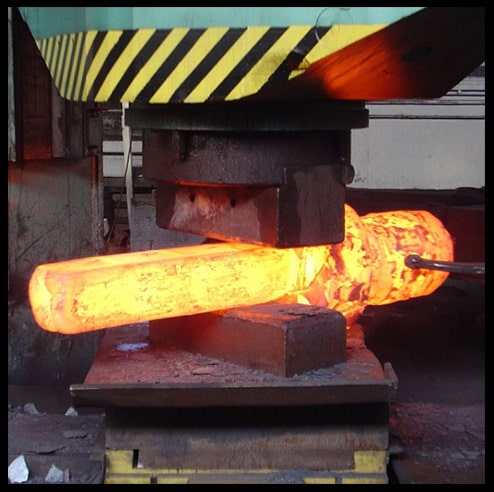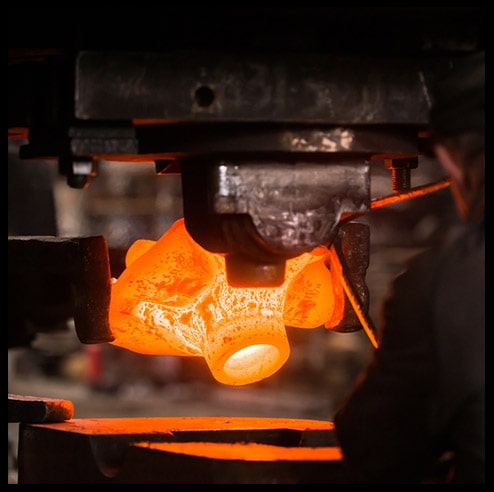
Open die forging is a technique for shaping the heated metal parts between multiple dies. It is also known as Smith Forging. Usually, a top die is attached to a ram, and the bottom dies to a hammer or anvil.
Various metal parts are worked upon as per their temperature which varies from 500°F to 2400°F, and then are shaped into the desired design. Open-die forging gets its name from the fact that the dies (the surfaces that are in contact with the workpiece) do not enclose the workpiece, allowing it to flow except where contacted by the dies. Open die forging is mostly used for designing larger and simpler shaped parts like blanks, hollows, spindles or rings.
A unique feature of this technique is that metal is never completely confined or restrained in the dies. Also, there is some science involved in this process. As the metal is formed; its porosity gets eliminated. Continuous grain flow is also achieved which gives strength to the metal.

Closed die forgingis a metal forming process that compresses a piece of metal under high pressure to fill an enclosed die impression or cavity.
In some closed die forging processes, a succession of impression dies are used to change the shape of the material into the final desired form. For some special shapes, second forging operation is required to reach final shapes and dimensions. The type of material, tightness of tolerances, and need for heat treatment can determine the cost of a closed die forged part.
Unlike open die forging which does not enclose the workpiece; closed die forging encloses the entire workpiece or major part of it in some cases to cover it completely. The closed die structure also gives a better surface finish and is economical for large production runs. Also, it requires almost no machining for its close tolerances.
As we talk about the ever-changing forging technology; we notice that the open and closed die forging has been growing especially in regions like North America, India, China, Europe, Southeast Asia, and Japan. The production, revenue, consumption, imports and export of forging has growth multifold in the above regions.
While catering to such a large set of clients spread across multiple geographical locations; and delivering in various industries; one important aspect is quality control and management. To be a noticeable forging firm; one needs to be a super expert in delivering quality products with precision within the stipulated time. Indian forging firms like Unicorn have implemented a quality management system in line with the ISO 9001: 2015 standards to make sure that quality control is taken care of at each segment of the process.